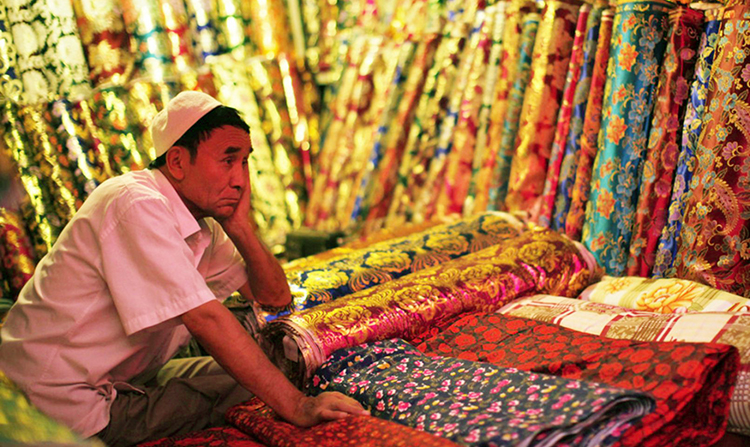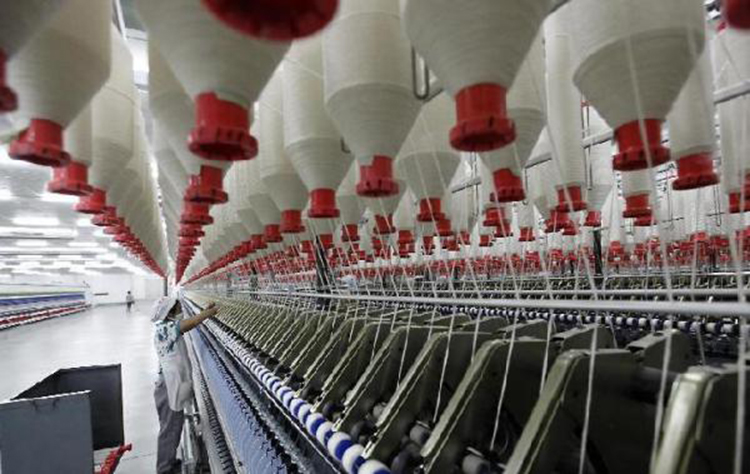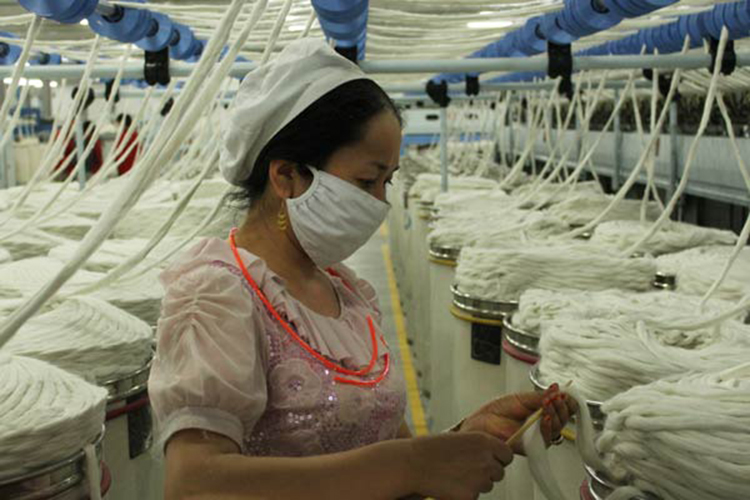Written by: Xinjiang Daily, translated by Wu Jinying
Posted on: November 26, 2015 |  | 中文
| 中文
Xinjiang textile industry to have over 10 million spindles by end of 2015
Recently, the Xinjiang government issued its Planning Outline (2014–2023) for Developing Textile and Garment Industry and Promoting Employment (the Outline thereafter). It was taken as an important plan for the next ten years of the development of the textile and garment industry in Xinjiang with the key aspects and area arrangements clarified. The guiding principle of the Outline is to focus on Southern Xinjiang with privileged policy support. Some key aspects have been highlighted and perceived to have a profound influence on the textile and garment industry of Xinjiang in the next decade.

Highlight 1: The government invests and encourages private capital investment in standard garment factory construction; exemption and subsides can be granted to medium and small state enterprises and private businesses that rent these factories for production.
“Fully constructed factories provided to enterprises in textile industry with no rent – this is a very unique privilege granted to the textile industry. Xinjiang is trying to improve its environment to absorb investments. It is indeed appealing”, said Mr. Zhang Tongzhi, the president of China Xinjiang Garment (Clothing) Industry Association to the reporter.
The development funds for the Xinjiang textile and garment industry come from the financial support allocated from China Central Government and the self-raised funds from Xinjiang regional government. The funds will be used to support the infrastructure development of the textile and garment industry, parks, factories, technological innovation, construction of high standard printing and dying water treatment facilities, subsidies for initial operation, electricity, transportation costs, credit risk compensation, etc. ??
Zhang Tongzhi said that the total funds coming from national and regional channels will reach RMB 20 billion Yuan to support the textile and garment industries in Xinjiang, and several textile enterprises have responded positively to this great news.

Highlight 2: Eliminated and out of date equipment will be strictly prohibited to enter Xinjiang textile industry.
According to Liang Yong, Deputy Director-General of Xinjiang Economic and Information Commission, not all enterprises that wish to come can settle down in Xinjiang, as high standards and access requirements will be set to encourage the best and qualified enterprises, mainly the top 500 domestic enterprises to join Xinjiang’s development. Liang explained the requirements in detail: “the concept must be established that high standard should be maintained throughout Xinjiang in terms of granting permission to application for entry. Factories with production capacity lower than 50,000 spindles are not allowed; eliminated and outdated equipment is strictly prohibited, and printing and dying projects can only be allocated moderately in three cities: Aksu, Korle (South Xinjiang) and Shihezi (North Xinjiang).”
Many professional insiders agreed that Xinjiang has been bestowed with several advantages in promoting its textile industry. One of them is the opportunity of industry transfer from Eastern coastal areas of China to Central and Western parts, and the second is the national strategies of assisting Xinjiang for its overall development.
Taking this opportunity to attract competitive enterprises coming to Xinjiang with investments, productions and know-how, and through the guidance of these leading corporations and their privileged brands and productions, Xinjiang could effectively merge its local resources and regional geographic advantages with brands, markets, management and technologies from East China and enter the domestic and international textile and garment industry production and supply chains, and finally, strengthen its own comprehensive capabilities in textile.
According to the Outline, till 2023, investment in research and development sector should exceed 1% of total investments for enterprises above the designated size in Xinjiang. Several industry innovation alliances would be formed in key fields of cotton textile and garments; over 30 regional level textile enterprises and technology centers (engineer centers) would be established.

Highlight 3: Added-value taxation collected from textile and garment enterprises will be used entirely to support further development of the industry. ??
Privileged taxation policies attract the attention of enterprises. As pointed out in the outline, in addition to all present financial and taxation policies which aim to promote textile industry development, all added-value taxation collected from textile and garment enterprises will be transferred and used to support further development of the textile industry. Liang Yong indicated that this is a policy with high values, which means that there will be more funds and investments from the government to assist industry development.
Besides taxation privilege, Xinjiang will expand its scope for production transportation compensation on the basis of present national and regional cotton textile production transportation subsides. It is hoped that the subsides would help lower the costs of transportation due to Xinjiang’s remoteness, and as a result it can serve as another attraction to enterprises outside Xinjiang for settling down in Xinjiang and promoting local employment. ?
Highlight 4: Industrial development arrangement will be further optimized to encourage balanced development. At present, Xinjiang has five textile industrial zones: Urumqi-Changji, Shihezi-Kuitun, Korle-Yuli, Aksu-Alar, and Kashgar. Based on the present structure, a further expanded rearrangement of “three cities and seven industrial parks” will be established. Newly approved projects will all settle down in the above mentioned textile cities or parks, which will have over 88% and 79% capacity, respectively, in terms of ring spun and rotor spun production, and over 95% of the cotton pulp and viscose fiber production capacity of Xinjiang.
In order to give full play to textile industry parks, suggestions have been given in the Outline to step up infrastructure development in key industrial bases and parks in Aksu, Korle and Shihezi, including roads, water supply and drainage, heating, electricity and gas supply, waste disposal, etc. Construction funds could be raised through various channels, such as regional and local financial allocation, issuing of bonds, bank loans, BOT or BT, etc. ?
In recent years, the textile industry in Xinjiang has witnessed remarkable progress with improved structure and benefits of concentrated development. Now, with the new Outline, the overall development of the textile industry will be upgraded and sped up with an optimized industrial structure. Zhang Tongzhi expressed that the Outline has made some detailed arrangements to avoid swarming of projects or vicious competition and to give best play of the local advantages of each park and to develop projects that match with local conditions.
Of course the Outline also focuses on the increase of employment through faster development of textile and garment industry in Xinjiang, in particular South Xinjiang. It is expected that more and more young locals will benefit from the new plan.
You may also like: